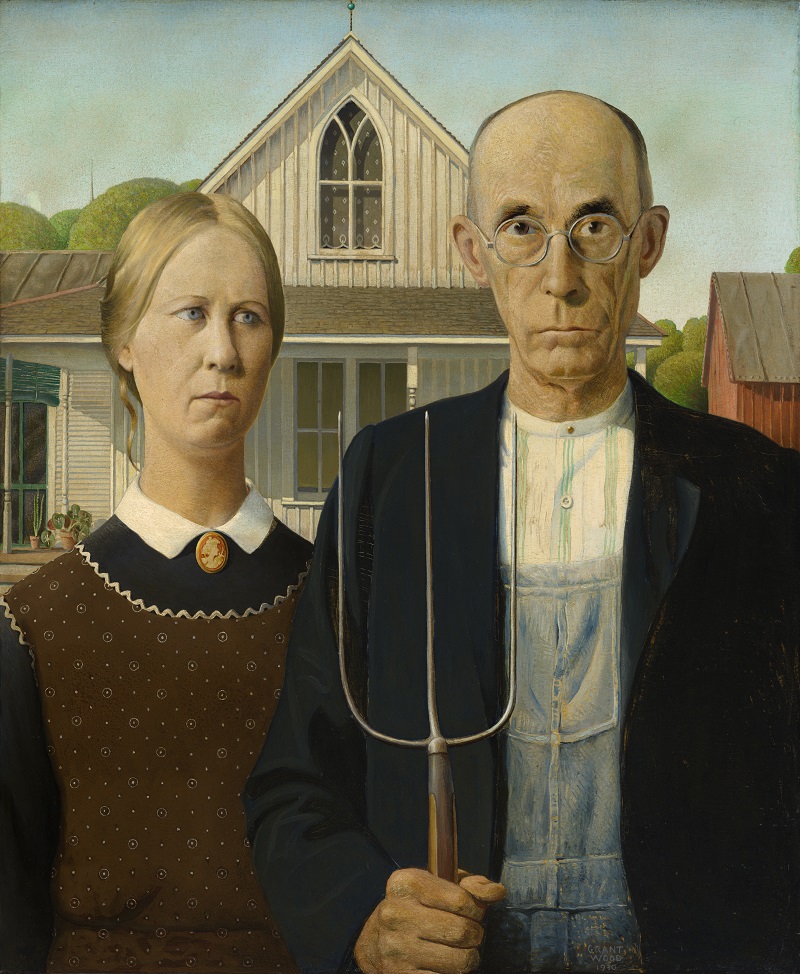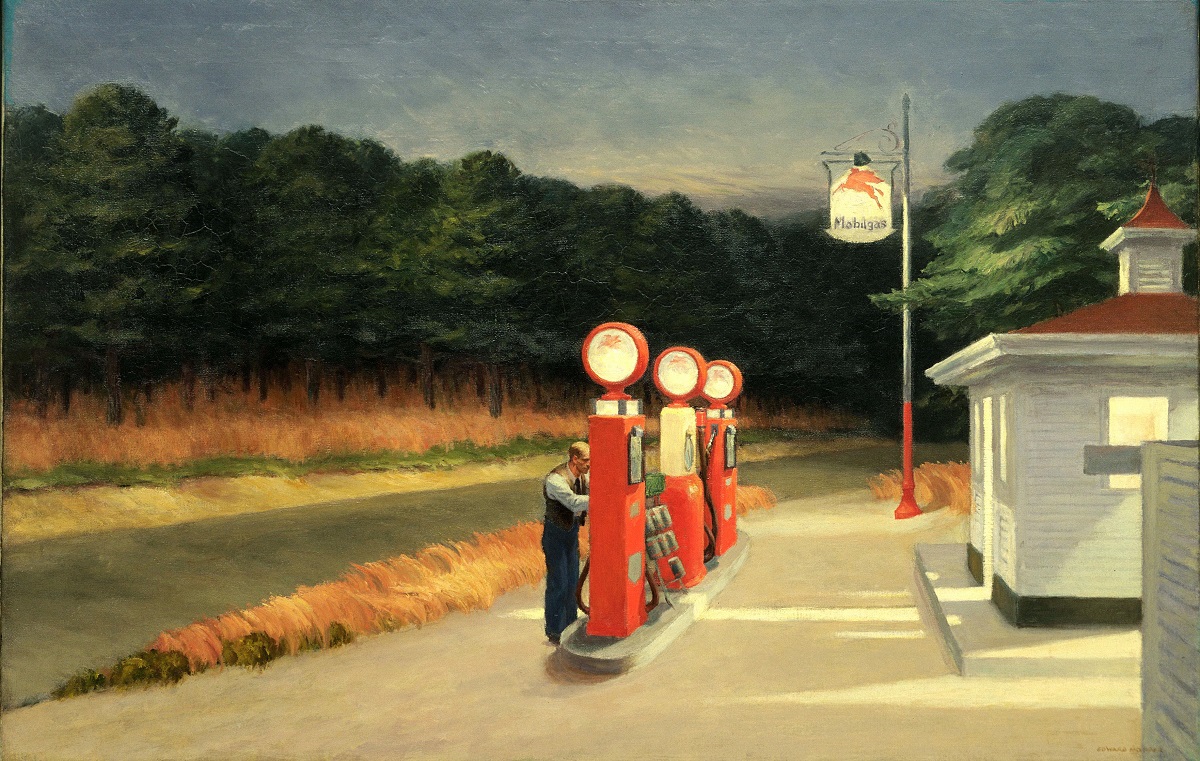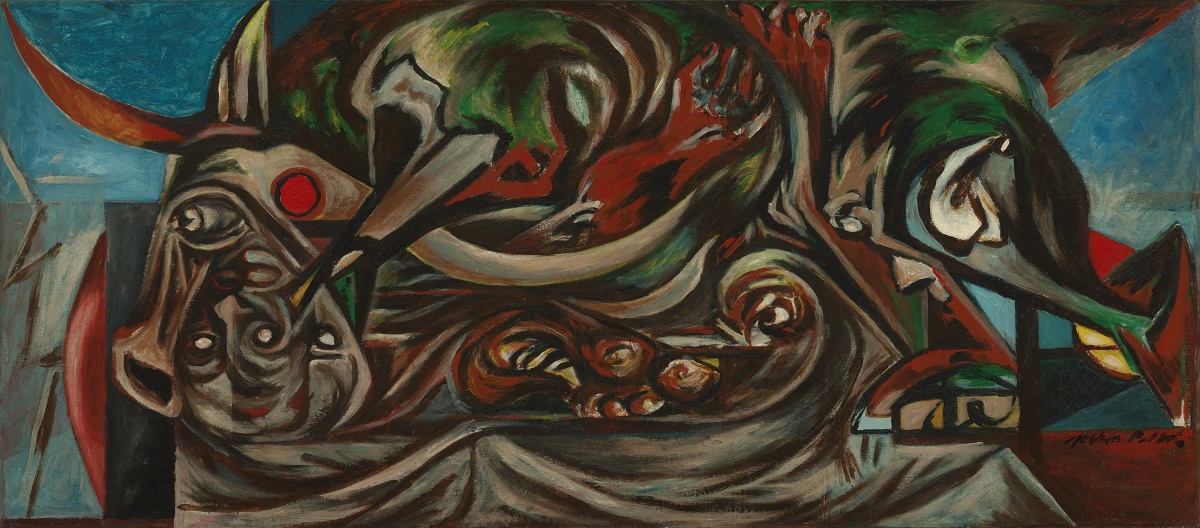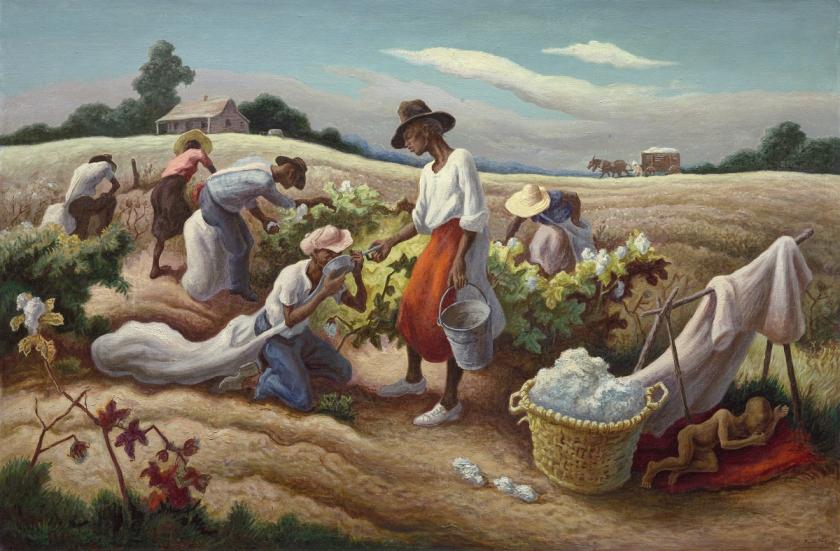It may be a cliché to say that this is a “timely” exhibition, but America After the Fall invites irresistible parallels with Trump’s America of today. The exhibition showcases American painting of the 1930s, documenting the intense anxiety precipitated by the Wall Street Crash of October 1929, the rise of Fascism in Europe, and the rapid social and economic changes brought about by mechanisation, industrialisation, immigration and mass urbanisation - and the hardships experienced by those left behind.
On the one hand these paintings celebrate American rural values – hard, honest work and frugality exemplified by the simple, homely aesthetic of American Shaker style, or local places and ordinary folk; on the other, they document gritty city life, the suffering and persecution of African Americans, industrial grandeur and the allure of escapist popular culture (particularly movies and jazz). At its heart is an earnest artistic quest for what it means to be “American” at a time of national and global uncertainty.
 In fact, the genesis of the exhibition’s concept was the 2008 financial crash and parallels with the 1930s Depression. Its curator Judith Barter is also keen to showcase what is, for her, the richest decade in American art – exemplified by the number of talented artists whose visions jostled to capture the American imagination. As times were especially bad, support came from the Federal Artists Project (1935-43), which sustained thousands of artists through the period (although it showed a marked preference for “scene” painting).
In fact, the genesis of the exhibition’s concept was the 2008 financial crash and parallels with the 1930s Depression. Its curator Judith Barter is also keen to showcase what is, for her, the richest decade in American art – exemplified by the number of talented artists whose visions jostled to capture the American imagination. As times were especially bad, support came from the Federal Artists Project (1935-43), which sustained thousands of artists through the period (although it showed a marked preference for “scene” painting).
The Royal Academy’s fascinating and sharply focused exhibition features 45 pictures by 32 different artists. Some of these are household names – for example, Edward Hopper, Alice Neel and Georgia O’ Keeffe; others, such as Joe Jones or William H. Johnson, are barely known, even to an American audience. These artists seek to define American modernism, exploring a variety of styles from Regionalism, Surrealism to Pop Art and the stirrings of Abstract Expressionism – drawing on a wealth of European influences and employing healthy doses of American satire and irony. The quality of the pictures in the show varies enormously – there are some real duds, alongside works of real quality – but there is also the pleasure of engaging with the clarity of the show’s thesis, which is simply expressed through thematic sections (and enhanced by the elegance of the exhibition design).
The star of the show, and a real coup for the Academy, is Grant Wood’s iconic American Gothic, 1930 (pictured above courtesy of the Art Institute of Chicago), which was an instant hit when it was first shown and was immediately purchased by the Art Institute of Chicago (which has loaned about a quarter of the works in the show). Dubbed America’s Mona Lisa, the famous double portrait of an elderly farmer and his daughter (modelled by Grant’s sister and dentist) has never left North America until now; no doubt the Institute is having to cope with a deluge of disappointed visitors. The picture speaks to change – at a time of farm foreclosures and the young deserting rural homes for the lure of the city life and employment.
Just as illuminating is the show’s juxtaposition of two Edward Hopper paintings, revealing just what an exceptional figure Edward Hopper was in his time: his singular vision and “old masterly” style were poorly understood by contemporary critics. New York Movie, 1939, with its plush velvet, dimly lit, curtained interior exudes an overpowering sense of quiet desperation, while Gas, 1940 (pictured above, courtesy of Collection of Museum of Modern Art, New York), transfers the individual’s solitary internal world to the roadside location of a garish gas station at night. The searing red diagonal of pumps set against a never-ending stretch of road and dark forest creates a lingering feeling of disquiet. The exhibition concludes with a section “Looking to the Future”, featuring amongst other works Arthur Dove’s Swing Music (Louis Armstrong), painted in 1938, and an early Jackson Pollock (c.1938/41), both of which anticipate and usher in the Abstract Expressionism of the 1950s – this show would have been wonderfully paired with the Royal Academy’s recent Abstract Expressionism show in the main galleries. (Pictured above: Pollock's Untitlted, courtesy of the Art Institute of Chicago). Barter's simple thesis is that as America moved from the desolation and violence of the 1930s, through its 1941 entry into the Second World War and on to Cold War disillusionment and the notorious blacklisting of communist artists (most of the artists featured in America After the Fall were communists or had communist sympathies) – abstraction became not only a vibrant new territory for individual expression, but also the safest territory to explore.
The exhibition concludes with a section “Looking to the Future”, featuring amongst other works Arthur Dove’s Swing Music (Louis Armstrong), painted in 1938, and an early Jackson Pollock (c.1938/41), both of which anticipate and usher in the Abstract Expressionism of the 1950s – this show would have been wonderfully paired with the Royal Academy’s recent Abstract Expressionism show in the main galleries. (Pictured above: Pollock's Untitlted, courtesy of the Art Institute of Chicago). Barter's simple thesis is that as America moved from the desolation and violence of the 1930s, through its 1941 entry into the Second World War and on to Cold War disillusionment and the notorious blacklisting of communist artists (most of the artists featured in America After the Fall were communists or had communist sympathies) – abstraction became not only a vibrant new territory for individual expression, but also the safest territory to explore.
- America After the Fall: Painting in the 1930s at the Royal Academy from 25 February to 4 June 2017
- More visual arts reviews on theartsdesk









![SEX MONEY RACE RELIGION [2016] by Gilbert and George. Installation shot of Gilbert & George 21ST CENTURY PICTURES Hayward Gallery](/sites/default/files/styles/thumbnail_125_x_125_/public/mastimages/Gilbert%20%26%20George_%2021ST%20CENTURY%20PICTURES.%20SEX%20MONEY%20RACE%20RELIGION%20%5B2016%5D.%20Photo_%20Mark%20Blower.%20Courtesy%20of%20the%20Gilbert%20%26%20George%20and%20the%20Hayward%20Gallery._0.jpg?itok=3oW-Y84i)





Add comment